|
Building Miscellany , Blisworth, Northamptonshire, UK. All pictures are presented at relatively low resolution. In some cases the pictures are not available due to copyright restrictions. However, permission has been obtained, where possible, to include them here. Printed below each image is the photographer's name, if known. |
|
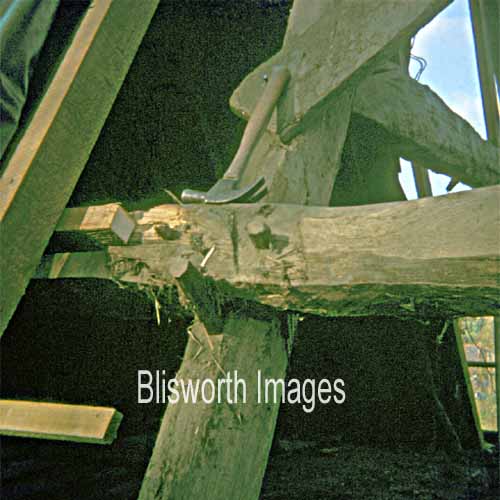 |
The roof of Clydecote (now Church House) in Church Lane in 1977 when the thatch was replaced and repair work was done on the timbers. The purlin in this picture has been set against a 'datum' peg, then drilled and fixed in position with another wooden peg. This is showing part of an A-frame which was retained. The building is listed. |
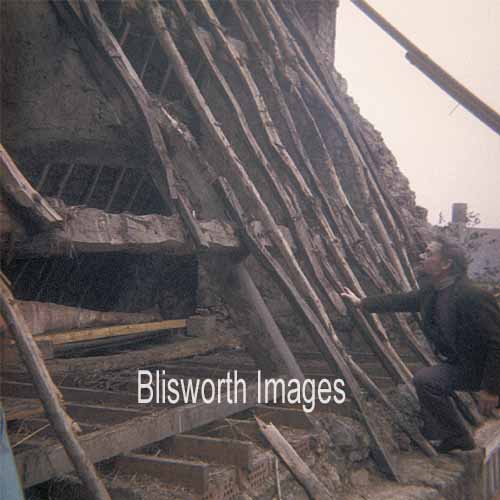 |
The same roof showing various poles set against a purlin to which the thatch was fixed. Anything durable such as oak or cheap and durable such as blackthorn were used. |
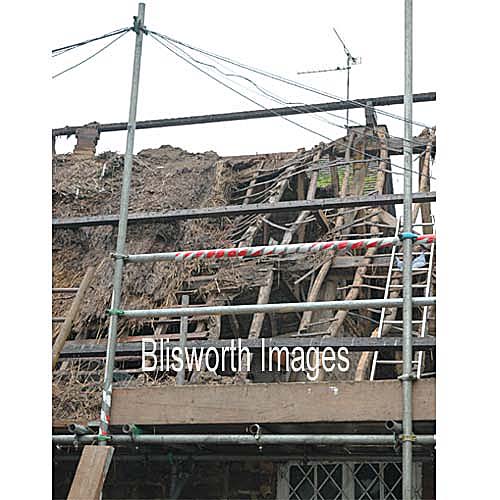 |
The same style using rough shafts from thorn trees is shown here. This was taken October 2006 when the rear of the Royal Oak Inn was being restyled, being a project to integrate the small barn with the main body of the public house. This ridge is over the building between the two. |
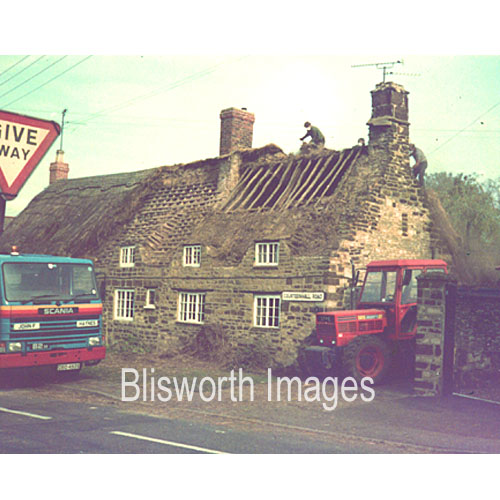 |
No. 1 Courteenhall Road, at the Elm Corner, also has rustic thatch rafters. The practice was obviously quite common. |
|
Footnote: Crieff House still has blackthorn 'locked' in the roof space when the house was tiled in the early 1900s. |
|
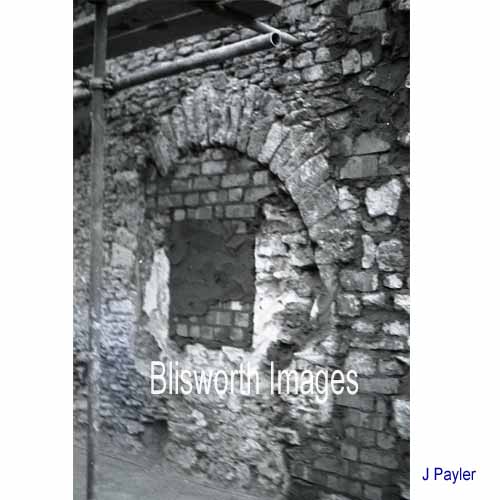 |
16-184 This is the end wall at number 38 High Street, facing number 40. Although the arch is only about 5 foot high, the indications are that there was communication between the two parts. On the number 40 side there was a substantial hollow in which there fitted a cupboard. This picture shows the hollow more-or-less filled up with new brickwork. The wall has been subsequently rendered and the owner is not at all happy with the idea that the archway might be of sufficient interest to warrant an investigation. |
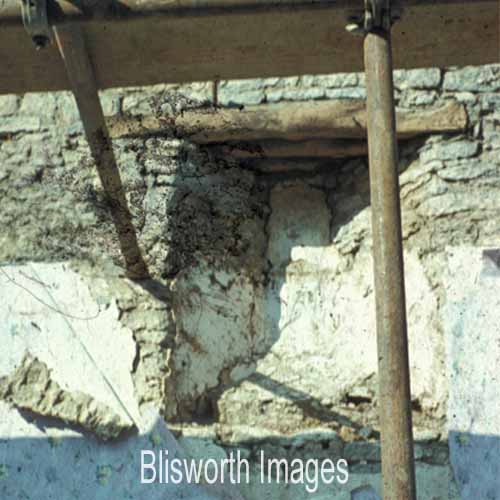 |
The same exposed wall of number 38 High
Street. This was a window set high in the gable. The ceiling
of the room of number 40 was once set across the middle of the picture
as shown by the plaster covering.
This seems to be a clear indication that number 38 was built first with, at some stage, an adjoining single storey building (see picture above) - perhaps a barn. The adjoining part was later made up to a full height cottage. Note the group of poles used as lintels for the window. The location of number 38 and 40 High Street is shown in the footnote page off High Street II. |
| There is frequent reference to buildings in
Blisworth built to a Grafton 'model', circa 1870, apparently much loved
by the Duke's wife.
Features are, scalloped barge boards, often built as twins, substantial chimney with 45 deg rotation in many cases, small concrete tiles set in broad bands - alternating square tongues with semi-circular tongues. Of course all were built in stone, and probably local stone. Many in Blisworth are plain 'white' limestone, some are banded and this one, location unknown, appears to be built with an iron-rich limestone/sandstone (has insufficient iron ore to spoil the freestone character). Most interiors had cramped or somewhat spiralled stairs. |
|